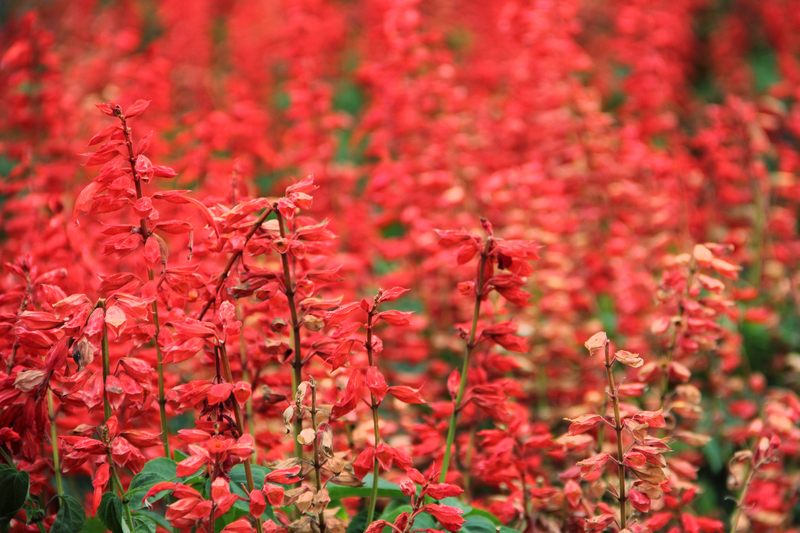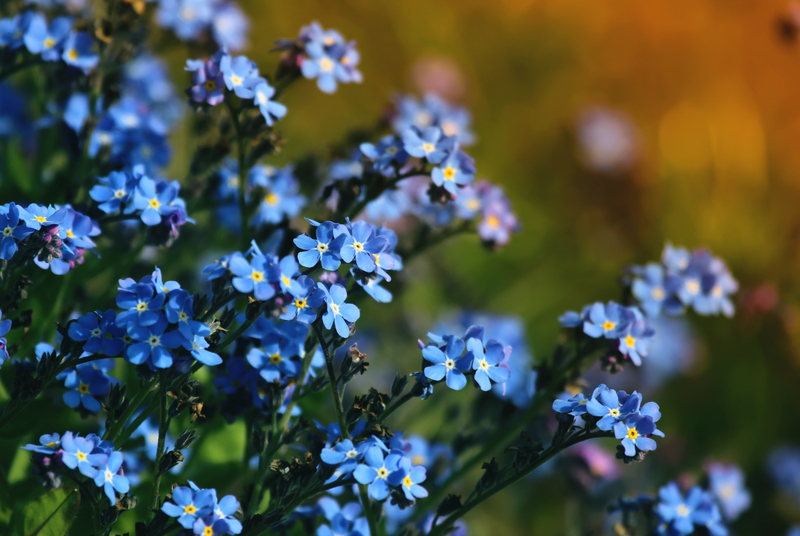Essential advice for gardening alongside your pup
Posted on 06/09/2025
Essential Advice for Gardening Alongside Your Pup
Gardening is a rewarding hobby, providing beauty, relaxation, and even fresh food right outside your door. But for dog lovers, it's also an opportunity to bond with your furry friend and turn your backyard into a shared sanctuary. If you're a pet parent seeking to cultivate a lush garden without compromising your dog's safety or your hard work, this comprehensive guide on gardening alongside your pup is tailored just for you.
Why Shared Outdoor Spaces Matter for You and Your Dog
Creating a garden that your dog can safely explore isn't just about aesthetics. Shared green spaces foster exercise, mental stimulation, and quality time, enhancing the physical and emotional health of both pets and their owners. Discover the key benefits of gardening with your canine companion:
- Physical Activity: Encourages both you and your dog to move, dig, and explore.
- Mental Enrichment: New scents and textures stimulate your pup's mind.
- Preventing Boredom: Dogs left alone may dig or chew, so participating in gardening can redirect energy positively.
- Strengthened Bond: Working together in the garden builds trust and friendship.

First Steps: Design a Pet-Safe Garden
Your outdoor oasis starts with a smart, dog-friendly garden layout. Here's how to ensure maximum harmony:
1. Choose Pet-Safe Plants
Some common garden plants are toxic to dogs. Always check plant safety before adding anything to your space. Examples of safe plants for dogs include:
- Sunflowers
- Snapdragons
- Marigolds
- Fuchsias
- Basil, Rosemary, and Sage (many culinary herbs are dog-safe!)
Avoid these common dangerous plants:
- Azalea and Rhododendron
- Oleander
- Foxglove
- Yew
- Lily of the Valley
- Sago Palm
For a full list, consult a trusted resource like the ASPCA's toxic and non-toxic plants database.
2. Create Clear Boundaries
Dogs appreciate structure as much as humans do. Define garden beds with sturdy edging--think low fences, rocks, or logs. Directing foot (and paw) traffic helps your dog learn which areas are for play and which are off-limits.
3. Designate a "Dog Zone"
Set aside a section of the yard specifically for your canine. Fill it with:
- Soft grass for lounging
- A digging pit filled with sand for enthusiastic diggers
- Shade for cooling off
- Tough, dog-proof toys
- Access to clean water
Tip: Reinforce the boundaries of this "doggy domain" with visible cues, and reward your pup for staying within it.
Gardening Techniques for a Happy Pup and Healthy Plants
Once your garden is dog-ready, focus on maintenance and gardening habits that support both plant health and canine safety.
Use Pet-Safe Treatments
- Fertilizers: Avoid products with bone meal, blood meal, or cocoa mulch--all can cause health issues if eaten.
- Pest Control: Opt for natural solutions like neem oil, diatomaceous earth, or insecticidal soap. Many chemical pesticides are hazardous to pets.
- Mulch: Stick to untreated wood chips or cedar mulch. Always avoid cocoa mulch.
Keep Tools and Supplies Secure
Store sharp tools and garden chemicals out of reach. Dogs are curious, and an ounce of prevention saves a lot of vet bills!
Supervise Gardening Activities
Even with safeguards, supervising your pup during gardening time is essential. Redirection and reward-based training will reinforce positive behavior.
Training Tips: Teaching Your Dog Garden Manners
The cornerstone of success for pet-friendly gardening is training. Consistency and patience lead to a respectful and cooperative pup who knows how to navigate your cherished green space. Here are effective methods:
Reward Good Behavior
- Encourage your dog to walk only on paths; reinforce with treats and praise.
- Lead your pup away from newly-planted beds, and reward compliance.
- Establish a command, such as "leave it," for forbidden plants or garden areas.
Discourage Digging in Garden Beds
To prevent unwelcome digging:
- Provide a dedicated digging spot where your dog is allowed to dig freely.
- Use sturdy edging or decorative fencing to deter entry to off-limits zones.
- Redirect every time your pup digs where they shouldn't--consistency is key!
Practice "Settle" Training
Teach your dog to relax on a specific mat or blanket in the garden, reinforcing "settle" or "place" commands. This gives you both a designated spot to enjoy the garden together.
Common Challenges and Practical Solutions
Every gardener faces a few hurdles when introducing a dog to their landscape. Below are some frequent complications and tips to resolve them:
1. Digging & Trampling
- Choose robust plants like lavender, ornamental grasses, and daylilies for borders--they can withstand the occasional paw.
- Lay down chicken wire just under the soil to discourage digging in key areas.
- Offer plenty of exercise and playtime outside the garden to help burn off excess energy.
2. Chewing Plants or Mulch
- Spray safe deterrents (like bitter apple spray) on problem plants.
- Pick up fallen fruit or seed pods immediately, as they can entice curious pups.
- Provide chew toys to redirect oral fixation.
3. Urine Spots on the Lawn
- Train your dog to use a specific potty area, decorated with mulch or gravel.
- Water the area immediately after your dog urinates to dilute harmful compounds.
- Choose tough, urine-resistant grass types like ryegrass or fescue.
4. Garden Toxins: What To Watch Out For
- Slug bait, rodenticides, and insecticides: Often toxic to dogs--use only pet-safe options.
- Compost: Make sure the pile is secure, as moldy or food scraps can be dangerous if eaten.
- Stagnant water: Prevent mosquito breeding and accidental drinking by using moving water features and cleaning containers.
Sustainable & Fun Activities for Gardening with Your Dog
Gardening with your dog can be both practical and playful. Explore new ways to engage together outdoors:
Try These Projects
- Construct a canine obstacle course from logs, stones, and low hurdles for exercise.
- Plant a "sniffing garden" using fragrant, pet-safe herbs and flowers--dogs love to use their noses!
- Grow dog-friendly veggies such as carrots or green beans and offer them as treats.
- Create a shaded nook with a cool mat or dog bed for lazy afternoons.
Benefits Beyond the Backyard
Integrating your pup into your gardening routine also teaches valuable lessons about responsibility, patience, and the joys of nurturing life together.
- Your dog learns boundaries and good behavior.
- You cultivate mindfulness as you care for plants and your pet simultaneously.
- The whole family enjoys a healthier and richer connection with nature.

Pet-Safe Gardening FAQs
- Can I use compost in my dog-friendly garden? Yes, but keep the compost bin fenced or covered. Never compost pet waste or any items toxic to pets.
- How do I keep my dog out of the flower beds? Consistent boundaries, training, and physical barriers like low fences work best. Redirect with "leave it" or provide an alternative play area.
- Is mulch safe for dogs? Most untreated wood mulches are safe. Avoid cocoa mulch and always supervise if your dog tends to chew.
- Which vegetables can I grow for my dog? Carrots, sweet potatoes, green beans, cucumbers, and spinach are pup-safe. Always introduce new foods gradually and avoid seasoning.
Conclusion: Cultivating a Paw-Approved Paradise
With some planning and patience, gardening alongside your pup becomes a joyful, shared adventure. Embrace responsible plant choices, train your dog with love and consistency, and take pride in a harmonious green oasis where both human and hound thrive. Whether you're harvesting veggies or playing fetch among the flowers, your garden will become a true haven for all its inhabitants--including your most loyal companion.
Happy planting--and happy tail wagging!



